If you are a big fan of the giant panda, a panda tour is a must on your bucket list. Where to see panda in China? Almost all big cities have zoos with giant pandas in China. If you have only 8 days for this panda tour, this 8-day itinerary including Beijing panda house in Beijing Zoo and Xi'an panda house in Xi’an Qinling Wildlife Zoo is your best choice. You will see the ordinary white and black giant pandas as well as the white and gray giant pandas during your panda visits to China. In addition to panda visits, all the must-see attractions in Beijing, Xi’an, and Shanghai are included, such as the Forbidden City, the Great Wall, the Terra Cotta Warriors and Horses, and the Yu Garden. If there is any other scruple holding you back from making the decision, please let us know, and we will be helpful all the time.

Welcome to Beijing! Our guide will be waiting for you at the airport, holding a sign with your name. After meeting you, we will drive you to the hotel. Our professional driver and guide are all well trained and will provide high-quality service while you are in China. Wish you a happy journey!
Beijing is the political and cultural center of China. As one of the six great ancient capitals of China, it is also a well-known historical and cultural city, rich in tourism resources. There are more than 200 tourist attractions and we will visit some of the most famous ones, including the Forbidden City and the Summer Palace. Beijing takes the Chinese rose and chrysanthemum as “the flowers of the city”, so you can often see these two kinds of flowers during your visit to Beijing. Besides, the traditional handicrafts produced here, such as artifacts made from jade and carpets are famous worldwide. They are good choices of presents for friends and family members for their good appearances, unique designs, and cultural meanings. You will definitely enjoy yourselves here and have a meaningful experience!
In the morning, after breakfast, our tour will begin with Tian’anmen Square. In the Ming (1368-1644) and Qing (1636-1912) Dynasties, Tian’anmen Square was a royal square outside the front gate of the Forbidden City. The square, nowadays, is a hot attraction for visitors. The total area of the square is 440,000 square meters, with a length of 880 meters from south to north and 500 meters from west to east. In the center stands the Monument to the People’s Heroes and the solemn Chairman Mao Zedong Memorial Hall. On the west side of the square, you will see the Great Hall of the People, and the National Museum of China is on the east side.
If you walk to the north end of Tian’anmen Square, you will see the front gate of the Forbidden City(closed each Monday). Now let’s enjoy the great imperial palace. Located in the center of Beijing, the Forbidden City takes up about 720,000 square meters, with around 150,000 square meters covered by buildings. Its more than 70 palaces contain more than 9,000 rooms. It consists of a front part and a back part. Standing in the center of the front part, the three great halls – the Hall of Supreme Harmony, the Hall of Central Harmony, and the Hall of Preserving Harmony used to be the places of holding important ceremonies, such as the enthronement ceremony of an emperor. When entering the back section, you will see the Palace of Heavenly Purity, the Hall of Union and Peace, and the Palace of Earthly Tranquility one after another, which were the living spaces of emperors and empresses as well as imperial concubines. You may also have a walk in the imperial garden if you take a step further.
After that, we will visit the Temple of Heaven. Located in the south of Beijing, the Temple of Heaven takes up 2.73 million square meters in total. It was first built in the eighteenth year (1420) of the Emperor Yongle in the Ming Dynasty and was restored and rebuilt by Emperor Qianlong and Emperor Guangxu in the Qing Dynasty. At that time, the Temple of Heaven was the place for emperors to worship God and pray for good harvests. Here, a series of attractions are worth visiting, for example, the Hall of Prayer for Good Harvests – the major building of the Temple of Heaven, the Imperial Vault of Heaven, the Danbi Bridge, the Divine Music Administration, and the Fasting Palace. If you are lucky enough, there may happen to be a performance of the rites of praying for good harvests!
Our next stop is Beijing Zoo. It is to the northwest of the Forbidden City. In addition to the animals you can see in an ordinary zoo, you can also see the giant pandas here. We will see many cute giant pandas in the Panda House. The Panda House takes up 100,000 square meters, with 1,452 square meters covered by buildings. The building is in the bamboo shoot-shape as a whole. The exhibition hall and sports field are divided into three parts, each for adult pandas, young pandas, and mother-cub respectively. As for the logistics section, there are several functional areas such as the treatment room and the delivery room. In the yard, with some of the original aspens and pine trees kept when the Panda House was first designed, some maple trees, tulip trees, and bamboos were added around the yard. Both the cute pandas and the pleasant natural scenes cannot be missed!
After the sightseeing in the Beijing Zoo, we will drive you back to the hotel. The rest of the day is all yours.

In the morning we will visit the Ding Tomb, one of the Ming Tombs. The Ming Tombs is located on the piedmont of Tianshou Hill in Changping District, in the north of Beijing. It is about 55 KM away from Tian’anmen Square and will take about 1 to 1.5 hours to drive there. The total area of the Ming Tombs is about 120 square kilometers. The first tomb was built in the seventh year (1409) of the reign of Emperor Yongle. Until the last Ming Emperor, the Emperor Chongzhen, was buried into Si Tomb, 13 emperor tombs, seven imperial concubine tombs, and one eunuch tomb were built within 230 years. Ding Tomb is one of the emperor’s tombs. There the thirteenth emperor of the Ming Dynasty, the notable Emperor Wanli and his two empresses were buried. Located on the foot of Dayu Hill, Ding Tomb takes up about 182,000 square meters. It was built between the twelfth year and the eighteenth year (1584 to 1590) of the reign of Emperor Wanli and is the only tomb that has been excavated among the Ming Tombs. Its major buildings include Ling’en Gate, Ling’en Hall, Ming Building, and the underground palace. More than 3,000 tools, vessels, and artifacts were excavated, including goldware, silverware, jade ware, jewelry, and gold crown. They provide substantial materials and evidence for the study of the history of the Ming Dynasty.
After lunch at a local restaurant nearby, we will go to the Mutianyu Great Wall. We will need to drive 1 to 1.5 hours toward the east to arrive there. The Mutianyu Great Wall is the longest section of the Great Wall in China, with a length of 5,400 meters. As the essence of the Great Wall built in the Ming Dynasty, the Mutianyu Great Wall was first built based on the relics of the Great Wall of the Northern Qi Dynasty (550 - 577) in 1368. Linking the Gubeikou Great Wall with Juyong Pass from east to west, it has been the military fortress for defending the city since it was established. Now in the scenic area, there are cable cars which may help if you do not want to climb the countless steps. John Major, former British prime minister and former American president Bill Clinton visited here and appreciated it a lot. The popular attractions here include the Mutianyu Pass, the Dajiaolou Fort, and “the Eagle Flying Upside down”. In China, the old saying goes “He who does not reach the Great Wall is not a true man”, so every gentleman may say confidently that he is a true man after coming back from there!
The day comes to an end and we will drive you back to the hotel. You must be very tired, so have a good rest and prepare for tomorrow’s journey.

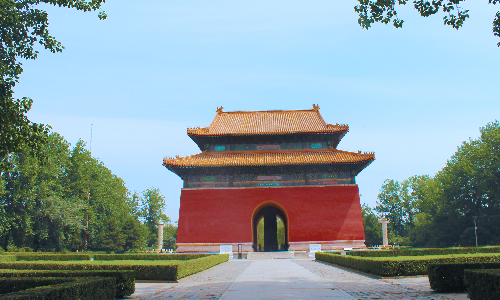
 Xi’an
Xi’an This day we will go to Xi’an. After having breakfast at the hotel, we will drive you to the train station. You will take the estimated high-speed train G89 06:53/11:24 to Xi’an.
In the afternoon, we will go to see the Great Mosque. This is our first destination of this day. The Great Mosque is one of the oldest mosques of Xi’an. It is located at Huajue Lane. As one of the four great Muslim mosques of China, it is a combination of Islamic culture and Han Chinese culture. The mosque was first built in the Tang Dynasty (618 - 907) and was restored in the Ming Dynasty. After the restoration and conservation by the Ming and Qing Dynasties, the classic structure style came into being. The Great Mosque takes up 13,000 square meters, with 6,000 square meters covered by buildings. The mosque includes four courtyards. There is a big hall in the fourth courtyard. With an area of 1,300 square meters, the hall may hold more than a thousand people to worship at the same time. Besides, the more than 400 drawings in the hall deserve appreciation.
After sightseeing in the Great Mosque, you will have some free time at the Muslim’s Quarter. The Muslim Quarter is a famous food and cultural block. It is a name for several streets, including North Guangji Street, North Gate, and Sajin Bridge. There, you will enjoy yourselves in the atmosphere of northwest China. There are numerous snacks, local cuisines, and refreshments of all kinds, such as Marinated Meat in Baked Bun, Pita Bread Soaked in Lamb Soup, Cold Rice Noodles, and Mirror Cake. Xi’an Mirror Cake, one of the most famous refreshments, is a traditional food of Xi’an. It is like a round mirror and made from glutinous rice.
After your stroll at Muslim’s Quarter, you will be driven back to the hotel. Please rest early because the next day we will go to an attraction far away from the city center after having breakfast at the hotel.

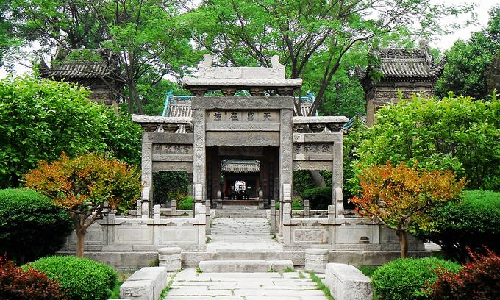
This day, we will go to Terra Cotta Warriors and Horses Museum first. We will pick you up at the hotel and it will take about 1 hour to drive there. The museum is at Lintong District of Xi’an, about 40 KM northeast of Xi’an city center. It is the biggest ancient military museum in China. The terra cotta warriors and horses are burial objects of the first emperor, Qin Shi Huang. The museum contains mainly three funerary pits of terra cotta warriors and horses and an exhibition hall of archeological objects. Pit No. 1 has a length of 230 meters from east to west, a width of 62 meters from south to north and a depth of 4.5 to 6.5 meters from the surface. It could be speculated that there are about 6,000 terra cotta warriors and horses in the first funerary pit according to the density of the warriors and horses that have been excavated. Besides, there also exists a large number of bronze weapons. The cross-section of Pit No. 2 is like a square ruler. With a length of 124 meters from east to west, a width of 98 meters from south to north and a depth of 5 meters, the second funerary pit takes up about 6,000 square meters. Although the number of warriors and horses of Pit No. 2 is much smaller than that of Pit No. 1, the arms of Pit No. 2 are richer in variety. There are more than 1,300 terracotta figurines and horses, more than 80 chariots, and tens of thousands of bronze weapons in Pit No.2. Pit No. 3 has a smaller scale and its cross-section is in a “U” shape. With a length of 28.8 meters from east to west and a width of 24.57 meters from south to north, it takes only up 520 square meters. The number of warriors and horses in the third funerary is merely 72, but the terracotta figurines here are the most intact comparing other the figurines in two pits.
After visiting the museum, you will have lunch at a authentic restaurant. Then you will visit the Big Wild Goose Pagoda, the first destination in the afternoon. It will be around 1-hour drive southwest from the Terra Cotta Warriors and Horses Museum and you may have a nap on the couch. The Big Wild Goose Pagoda is in the Ci’en Temple in the south of Xi’an City, so it is also called “the Pagoda of Ci’en Temple”. The Pagoda was first built in the third year of the reign of Emperor Gaozong(652) in the Tang Dynasty for the storage of the Buddhist treasures carried back from ancient India by the monk master Xuanzang. At first, the pagoda had five stories and then another four stories were added. After several rounds of rebuilding, it became today’s 7-story building. Now the pagoda is about 65 meters high. There are Buddhist treasures exhibited on each floor, including the statue of Gautama Buddha on the second floor. There used to be a tradition in the Tang Dynasty. When a scholar got really good grades in the imperial examination held in the imperial palace by the emperor, he would leave his signature on the wall of the Big Wild Goose Pagoda as one of the celebration activities.
After that, we will drive north for about 20 minutes. Then, you can enjoy the cultural atmosphere created by the ancient City Wall. The ancient City Wall of Xi’an is the largest in scale and conserved the best among the existing ancient city walls of China. The wall today was rebuilt in the Ming Dynasty. The construction work lasted from the third year (1370) to the eleventh year (1378) of the reign of the first emperor in the Ming Dynasty and was done based on the remaining walls of the Sui(581 - 618) and Tang Dynasties. Now there are 18 city gates with 4 main gates, among which the Yongning Gate, the main gate of the south, is the oldest one and was first built in the early Sui Dynasty (581 - 618).
Now, this day comes to an end and we will drive you back to the hotel. Tomorrow our driver and guide will pick you up after breakfast at the hotel and drive you to the airport.
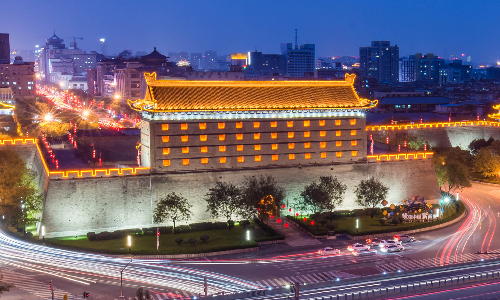
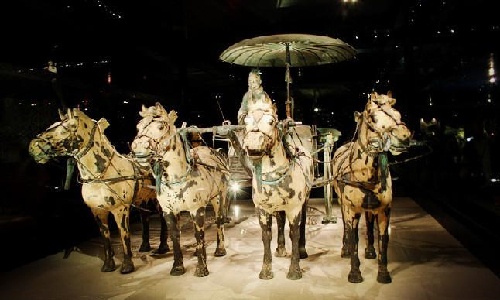
 Shanghai
Shanghai After driving south for about 1 hour (about 30KM) from the city center, we arrive at today’s first stop – Xi’an Qinling Wildlife Zoo. In the zoo, there are more than 200 typical species of wildlife from all over the world, and the number of animals is 6000. Among them, the most famous ones must be the “Four Treasures of Qinling” – pandas, takins, snub-nosed monkeys and Asian crested Ibises. The zoo has several themed exhibition areas, including a marine animal performance venue, a beast zone, a grassland animal zone, a captive animal zone, a pedestrian zone, a world of circus, and a bird performance venue. Among all the animals, the one that cannot be missed is the Qinling giant panda living in the pedestrian zone – the inhabitants of which also include Asian elephants, Bengal white tigers, hippopotamuses, chimpanzees, snub-nosed monkeys and kangaroos. The Qinling giant panda is a new subspecies of giant pandas. Compared with Sichuan giant pandas – another more famous subspecies, the Qinling pandas, with a height of 1.7 meters, are bigger than their Sichuan counterpart (usually with a height of 1.4-1.5 meters). Additionally, besides the most common colors of pandas which are white and black, some of the Qinling pandas are in brown, which is unique to the world. Maybe this is the reason why they are called “beauties of the national treasure”.
Then you will take the estimated flight HO1216 18:30/21:00 to Shanghai. Our guide and driver in Shanghai will welcome you at the airport and drive you to the hotel. Please take care of yourselves and have a good rest for tomorrow’s trip!
Shanghai is one of China’s four municipalities, a mega city, and a global center of finance, trade and economy, transportation, and scientific innovation. Shanghai is also very rich in tourism resources.


In the morning, after breakfast, we will visit Jade Buddha Temple first. Because there are two jade Buddha statues enshrined in this temple, it is called Jade Buddha Temple. After the first temple which was built in the Qing Dynasty was destroyed by the war with the most precious jade buddha statues survived, today’s new temple was built in 1918. Since then, the temple has been an important place for international cultural communication. Many famous foreign guests visited here, including some government officials and celebrities such as Margaret Rose, the princess of the UK, and Jean-Pierre Raffarin, the former prime minister of France.
The second place we will visit in the morning is the Yu Garden(closed each Monday). It is to the east of Jade Buddha Temple and will take us about 15 minutes to get there. The Yu Garden originally was a private garden built in the Ming Dynasty and was not open to the public until the September of 1961. There are more than 40 ancient buildings, including six major attractions. Each attraction has its own characteristics. In the Sansui Tang area, there are two iron lions made in the Yuan Dynasty (1206 - 1368) at the entrance of the promenade. They look like two guardians who protect the garden for the masters. Besides, you may see some precious cultural relics such as the gold bowl made in the Tang Dynasty and some great painting works of outstanding artists.
After having lunch at a restaurant nearby, we will drive across the Huangpu River to visit Shanghai Tower. This 132-story skyscraper is one of the symbolic buildings of Shanghai. You may arrive on the 118th floor within one minute by taking the super-fast sightseeing lift! There is a sightseeing hall built with all-round glass walls. You may overlook the city in any direction. The Oriental Pearl TV Tower, Jinmao Tower, and Shanghai World Financial Center are under your feet. The whole city is lying in front of your eyes! How surprising it is!
Then you will have a walk in the Bund, where the promotional video of Shanghai was shot. From there, you will see all the skyscrapers across the Huangpu River. Then you will have some free time at Nanjing Road, where you can buy some souvenirs, such as silk clothes and local handcrafts, for your friends and family.
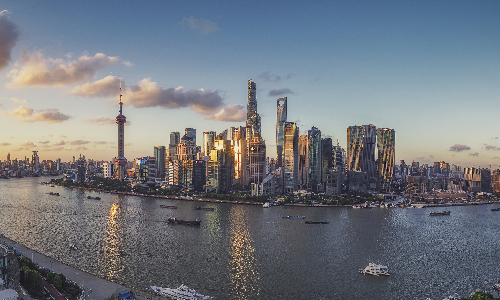

There will be no visiting plans on this day. Our guide and driver will pick up you at the hotel and drive you to the airport according to your flight schedule. We are pleased to serve you and looking forward to meeting you next time!
Author: Rui Zhou
Proofreader: Summer Hou
| City | Five Star hotel list | Four Star hotel list |
|---|---|---|
| Beijing | Sunworld Dynasty Hotel Beijing Wangfujing | Sunworld Hotel Wangfujing |
| Xi'an | Tianyu Gloria Grand Hotel Xi'an | Sunworld Dynasty Hotel |
| Shanghai | Ocean Hotel Shanghai | Courtyard by Marriott Shanghai Central |
 |
![]() About your child or infant, please contact us for a discounted price.
About your child or infant, please contact us for a discounted price.



We started with a few days in Beijing & ended in Shanghai, from where we visited the Forbidden City and Great Wall. In between we visited Terra Cotta Warriors Museum, Panda Base, Shanghai Disneyland.

We had a wonderful holiday in China which will remain long in the memory. China is a breathtakingly beautiful country full of splendid temples and palaces, mountains and rivers, peaceful rural scenes and bustling shopping streets.
 QUICK ENQUIRY
QUICK ENQUIRY